Congenitally missing permanent maxillary lateral incisors have been reported to occur in 3.5–6.5% of Caucasians, the occurrence in females outnumbering that in males by a rate of 3:2.8–10 There are various treatment options, including substitution with reshaped canines and orthodontic space opening and prosthodontic replacement or auto-transplantation. It has been found that the treatment choice of space closure versus space opening is still a debated issue among orthodontists and prosthodontists.11, 12
According to the literature, space closure and canine substitution is preferred in cases of unilateral missing lateral incisors, balanced profiles, canines and premolars of similar size and colour, bimaxillary protrusion or Class II malocclusion.13–15 Space opening is favoured in cases of Class I malocclusion, spaced maxillary dentition, or large size differences between canines and first premolars.16
A recent retrospective study concluded that decision-making for treatment of congenitally missing lateral incisors is directly dependent mainly on the following factors:17
- patient’s age at treatment commencement;
- individual characteristics of each clinical situation; and
- collaboration of the specialists in the treating team.
Even though there are studies supporting the superiority of space closure treatment,11, 18 each case should be individually evaluated. In the case reported in the present study, the option of space opening for prosthetic rehabilitation was chosen, since the goal was to achieve Class I molar and canine relationships and a wider smile. To avoid compromise, Class I molar and canine relationships were achieved, the Bolton discrepancy was improved and the midlines were coordinated. Other studies have also shown excellent aesthetics and functional results with space opening and prosthetic rehabilitation.19 Both treatment alternatives have been found satisfactory, having similar functional and periodontal results,20 whereas in another study, laypeople rated both treatments as equally good.21 Our choice of space opening was also supported by the possibility of gaining an excellent occlusion. Recent advances in the Invisalign system allow predictable distalisation of posterior teeth to facilitate treatment of Class II and III malocclusions.22 Aligner therapy in association with composite attachments and Class II elastics has been found to achieve sufficient distalisation with no changes in facial height.23 As shown in the cephalometric analysis, this was achieved in the presented case, since facial height remained the same compared with the initial situation. Regarding the slight tendency for posterior open bite, it has been found that settling and improvement of occlusal contacts occur beyond three months after treatment.24 Thus, improvement of this situation and tight occlusal contacts are expected in the post-treatment period. As far as the choice of single implant placement and restoration in the area of the missing lateral incisor is concerned, it has been found that it is the most common treatment alternative.25 It leaves adjacent teeth intact; thus, its main advantage is conservation of tooth structure.
Our treatment choice was based on detailed multidisciplinary diagnosis and planning, and this has been found to be imperative for achieving the best individual results for patients with missing lateral incisors.26 The contribution of digital technology has been recognised in improving and simplifying diagnosis, treatment planning and execution in orthodontics.27 The tool of digital set-up for diagnosing and treatment planning has been found reliable for reproducing orthodontic treatment.28 ClinCheck software (Align Technology) was effectively utilised in the presented case, in order to plan the multidisciplinary treatment and communicate it between the treating team and the patient.
Conclusion
Missing maxillary lateral incisor cases should be managed from an interdisciplinary diagnostic and treatment perspective. There are considerable benefits of using ClinCheck software as a tool for treatment planning and communication among clinicians and the patient, to finalise a treatment plan that addresses all the patient’s concerns. This case report shows how a successful team (orthodontist, restorative dentist and surgeon) when using state-of-the-art methods, can strive for excellence and create aesthetic and functional smiles with no compromise.



 Austria / Österreich
Austria / Österreich
 Bosnia and Herzegovina / Босна и Херцеговина
Bosnia and Herzegovina / Босна и Херцеговина
 Bulgaria / България
Bulgaria / България
 Croatia / Hrvatska
Croatia / Hrvatska
 Czech Republic & Slovakia / Česká republika & Slovensko
Czech Republic & Slovakia / Česká republika & Slovensko
 France / France
France / France
 Germany / Deutschland
Germany / Deutschland
 Greece / ΕΛΛΑΔΑ
Greece / ΕΛΛΑΔΑ
 Italy / Italia
Italy / Italia
 Netherlands / Nederland
Netherlands / Nederland
 Nordic / Nordic
Nordic / Nordic
 Poland / Polska
Poland / Polska
 Portugal / Portugal
Portugal / Portugal
 Romania & Moldova / România & Moldova
Romania & Moldova / România & Moldova
 Slovenia / Slovenija
Slovenia / Slovenija
 Serbia & Montenegro / Србија и Црна Гора
Serbia & Montenegro / Србија и Црна Гора
 Spain / España
Spain / España
 Switzerland / Schweiz
Switzerland / Schweiz
 Turkey / Türkiye
Turkey / Türkiye
 UK & Ireland / UK & Ireland
UK & Ireland / UK & Ireland
 International / International
International / International
 Brazil / Brasil
Brazil / Brasil
 Canada / Canada
Canada / Canada
 Latin America / Latinoamérica
Latin America / Latinoamérica
 USA / USA
USA / USA
 China / 中国
China / 中国
 India / भारत गणराज्य
India / भारत गणराज्य
 Japan / 日本
Japan / 日本
 Pakistan / Pākistān
Pakistan / Pākistān
 Vietnam / Việt Nam
Vietnam / Việt Nam
 ASEAN / ASEAN
ASEAN / ASEAN
 Israel / מְדִינַת יִשְׂרָאֵל
Israel / מְדִינַת יִשְׂרָאֵל
 Algeria, Morocco & Tunisia / الجزائر والمغرب وتونس
Algeria, Morocco & Tunisia / الجزائر والمغرب وتونس
 Middle East / Middle East
Middle East / Middle East
:sharpen(level=0):output(format=jpeg)/up/dt/2024/04/Clearcorrect-launches-new-digital-solutions-globally.jpg)
:sharpen(level=0):output(format=jpeg)/up/dt/2024/04/IDEM-Singapore-2024_5_Invisalign.jpg)
:sharpen(level=0):output(format=jpeg)/up/dt/2024/04/New-Align-Technology-Campus-to-elevate-the-standard-of-care-in-dentistry-1.jpg)
:sharpen(level=0):output(format=jpeg)/up/dt/2024/04/How-far-has-3D-printing-brought-clear-aligners.jpg)
:sharpen(level=0):output(format=jpeg)/up/dt/2024/04/A-non-surgical-orthodontic-approach-using-clear-aligners-in-a-Class-III-adult-patient_header.jpg)
:sharpen(level=0):output(format=jpeg)/up/dt/2022/07/Treatment-of-a-patient-with-a-congenitally-missing-lateral-incisor-using-aligners-A-case-report.jpg)
:sharpen(level=0):output(format=jpeg)/up/dt/2022/05/Dr-Christodoulos-Laspos-300x300.jpg)
:sharpen(level=0):output(format=jpeg)/up/dt/2022/05/Dr-IroEleftheriadi_1-300x300.jpg)
:sharpen(level=0):output(format=jpeg)/up/dt/2022/05/Figs.-1a%E2%80%93h.jpg)
:sharpen(level=0):output(format=jpeg)/up/dt/2022/05/Figs.-2a%E2%80%93e.jpg)
:sharpen(level=0):output(format=jpeg)/up/dt/2022/05/Fig.-3-1.jpg)
:sharpen(level=0):output(format=jpeg)/up/dt/2022/05/Fig.-4.jpg)
:sharpen(level=0):output(format=jpeg)/up/dt/2022/05/Figs.-5a%E2%80%93e.jpg)
:sharpen(level=0):output(format=jpeg)/up/dt/2022/07/Figs.-6a%E2%80%93h.jpg)
:sharpen(level=0):output(format=jpeg)/up/dt/2022/05/Figs.-7a%E2%80%93e.jpg)
:sharpen(level=0):output(format=jpeg)/up/dt/2022/05/Figs.-8a%E2%80%93e.jpeg)
:sharpen(level=0):output(format=jpeg)/up/dt/2022/05/Figs.-10a%E2%80%93c.jpg)
:sharpen(level=0):output(format=jpeg)/up/dt/2022/05/Figs.-11a-b.jpg)
:sharpen(level=0):output(format=jpeg)/up/dt/2022/05/Figs.-12a%E2%80%93c.jpg)
:sharpen(level=0):output(format=jpeg)/up/dt/2022/05/Figs.-13a-b.jpg)
:sharpen(level=0):output(format=jpeg)/up/dt/2022/05/Fig.-14.jpg)
:sharpen(level=0):output(format=jpeg)/up/dt/2022/05/Fig.-15.jpg)
:sharpen(level=0):output(format=jpeg)/up/dt/2022/05/Fig.-16.jpg)
:sharpen(level=0):output(format=jpeg)/up/dt/2024/04/Clearcorrect-launches-new-digital-solutions-globally.jpg)
:sharpen(level=0):output(format=jpeg)/up/dt/2024/04/IDEM-Singapore-2024_5_Invisalign.jpg)
:sharpen(level=0):output(format=jpeg)/up/dt/2024/04/New-Align-Technology-Campus-to-elevate-the-standard-of-care-in-dentistry-1.jpg)
:sharpen(level=0):output(format=jpeg)/up/dt/2024/02/Fig.-10.jpg)
:sharpen(level=0):output(format=jpeg)/up/dt/2024/02/Align-Technology-announces-new-iTero-Lumina-intra-oral-scanner-1.jpg)
:sharpen(level=0):output(format=jpeg)/up/dt/2024/01/3D-printing-acquisition-may-help-Align-Technology-to-break-the-mould.jpg)
:sharpen(level=0):output(format=jpeg)/up/dt/2024/01/Dr-Ellaine-Halley.jpg)
:sharpen(level=0):output(format=jpeg)/up/dt/2024/02/Dentsply-Sirona-offers-new-on-demand-Aligner-Course-Series1920x1080.jpg)
















To post a reply please login or register